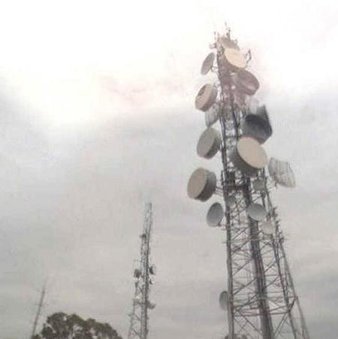I've been a broadcast meteorologist on television since the early 1990's. Happy to answer any questions about the weather or local TV news. Yes, I often wear sneakers on set just out of view of the camera.
Well.....most of us are highly intelligent. :) We take visual cues from the maps that are behind us. We can see the maps in the teleprompter that the anchors use for their scripts. Since we have prepared the forecast we can pick a couple of things from each graphic to talk about. Actually pretty easy with some practice. Great question, thanks!
Hi. The Farmer's Almanac does not share their forecast methods outside the company. I actually don't know how accurate they are, but they have had a loyal following for many years. Let me know if you find out any secrets! :)
My guess is that you were under some type of "convective" event like a thunderstorm and the rain gauges that the reports came from were not under that event. With some thunderstorms the distances in between no rain and heavy rain can be quite small. Thanks!
I would say yes, Eric. Which is a little unnerving since I'm a broken down old man!
Navy Officer (Former)
 Just how educated is the typical US military serviceman?
Just how educated is the typical US military serviceman?
Nurse Practitioner
 Could a nurse practitioner do the job of a primary care physician?
Could a nurse practitioner do the job of a primary care physician?
Radio program/music director
 Do radio stations have to pay royalties to artists to play their songs?
Do radio stations have to pay royalties to artists to play their songs?
Some cities are more competitive than others but in general I think we are usually friendly with each other. I had lunch with a competitor a few weeks ago. And, to beat that, I married one of the meteorologists from a competing station when we met at a live event! Sometimes managements frown on hanging out with "the enemy". We all draw from the same sources of forecast data. The differences can come from time spent in the market, preference for one computer forecast model over another in a given situation and overall experience. Usually the biggest differences will come during bigger events, like a snow storm or tropical weather, or there is no agreement among the different computer forecasts. Great question, thanks!
Might depend on your location. Broadly I would say look to be behind a cold front. You are looking for an airmass change to one cooler and drier, perhaps with an origin in Canada.
Excellent question, Krissy. Snow occurs when the temperature is below 32 from the surface of the earth to as high as 10,000 feet. Sleet occurs when a warm layer of air develops in between the ground and the formation zone so the snowflake melts and refreezes in the cold layer next to the ground.
-OR-
 Login with Facebook
Login with Facebook (max 20 characters - letters, numbers, and underscores only. Note that your username is private, and you have the option to choose an alias when asking questions or hosting a Q&A.)
(A valid e-mail address is required. Your e-mail will not be shared with anyone.)
(min 5 characters)
By checking this box, you acknowledge that you have read and agree to Jobstr.com’s Terms and Privacy Policy.
-OR-
 Register with Facebook
Register with Facebook(Don't worry: you'll be able to choose an alias when asking questions or hosting a Q&A.)